Business
FTSE 100 reaches new high as gold and oil surge

Blue chips in London closed up sharply on Thursday, after hitting a new record peak on commodity price strength and well received trading updates.
The FTSE 100 index closed up 63.57 points, 0.7%, at 9,578.57. It had earlier established a new best level of 9,594.82.
The FTSE 250 ended 131.62 points higher, 0.6%, at 22,361.41 and the AIM All-Share advanced 7.26 points, 1.0%, at 775.29.
Boosting London’s lead index, there were gains in commodity prices with oil and gold moving ahead strongly.
Oil majors Shell and BP climbed 2.9% and 3.7%, respectively, as Brent crude surged.
Brent oil traded at 65.75 US dollars a barrel, up from 62.61 dollars late on Wednesday.
The rise followed co-ordinated US-EU sanctions aimed at cutting off Russian oil revenues.
Smaller energy producers tracked the move higher, with Tullow Oil jumping 7.4% and Harbour Energy up 5.1%.
US President Donald Trump said the sanctions would target Rosneft and Lukoil, Russia’s two largest oil companies, after talks with Vladimir Putin “went nowhere”.
He described the measures as “tremendous”, but said he hoped they would be short-lived, adding: “We hope that the war will be settled.”
The move was joined by another round of punishments by the EU as part of attempts to pressure Moscow to end its three-and-a-half-year invasion of Ukraine.
“These new sanctions are likely to have a real impact,” said Arne Lohmann Rasmussen, an analyst at Global Risk Management.
But Bridget Payne, analyst at Oxford Economics, expects any oil price strength to be limited.
“This is a significant escalation, but it doesn’t remove barrels from the market. It might add a modest risk premium if banks comply strictly, but any rally is likely to be limited by the surplus outlook,” Ms Payne wrote.
She expects the impact to fall mainly on Russian revenues rather than global supply.
Meanwhile, gold continued its roller-coaster week. The yellow metal traded at 4,146.49 dollars an ounce on Thursday, up from 4,028.64 dollars on Wednesday.
This saw Fresnillo rise 5.3% and Endeavour Mining jump 3.0%.
The price of gold fell sharply on Tuesday and Wednesday after recent strong gains.
Analysts at Goldman Sachs wrote: “While a correction in speculative upside call options structures likely contributed to the selloff; we believe sticky, structural buying will continue further, and still see upside risk to our 4,900 dollar end-2026 forecast from growing interest in gold as a strategic portfolio diversifier.”
Trading news also gave the FTSE 100 a leg up on a busy day of updates, with Rentokil Initial soaring 8.3% and London Stock Exchange Group jumping 7.2%.
Rentokil’s gains came as it reported improved trading in its North American business, fuelling optimism that plans to turn around the unit are working.
The Crawley, West Sussex pest control and hygiene services business said revenue rose 4.6% at constant currency to 1.81 billion dollars (£1.36 billion) in the three months to September from 1.72 billion dollars (£1.29 billion) the year prior. Organic sales growth was 3.4%, picking up speed from 1.6% in the second quarter of 2025.
Revenue growth in North America was 4.6% with organic revenue growth of 3.4%. That organic sales growth represented an improvement from 1.4% in the second quarter and was ahead of 1.8% consensus.
RBC Capital Markets said: “We believe this statement highlights that Rentokil is slowly getting back on track and heading in the right direction. For patient investors, we continue to see Rentokil’s issues as fixable and see significant re-rating potential over time.”
London Stock Exchange climbed as it raised margin guidance after a strong third-quarter driven by growth across the business, led by Risk Intelligence and FTSE Russell indices.
LSEG also announced a £1 billion share buyback and a deal with 11 major banks for its Post Trade division.
The pound was quoted lower at 1.3323 US dollars at the time of the London equity market close on Thursday, compared to 1.3366 dollars on Wednesday.
The euro stood at 1.1609 dollars, down slightly compared to 1.1610 dollars. Against the Japanese yen, the dollar was trading at 152.71 yen, higher compared to 151.78 yen.
In Europe, the CAC 40 in Paris ended 0.2% higher, as did the DAX 40 in Frankfurt.
Stocks in New York were higher at the time of the London close. The Dow Jones Industrial Average was up 0.1%, the S&P 500 was 0.3% higher, and the Nasdaq Composite advanced 0.6%.
The yield on the US 10-year Treasury was quoted at 4.00%, widened from 3.96% on Wednesday. The yield on the US 30-year Treasury stood at 4.58%, up from 4.55% on Wednesday.
Back in London, Unilever rose 0.8% after reaffirming its annual guidance and forecasting faster growth in the second half of the year despite challenging market conditions.
Underlying sales, however, rose 3.9%, amid a 1.5% boost from volumes and a 2.4% advance in price. Underlying sales beat the company-compiled consensus of 3.7% growth.
Barclays said the beat was “powered by a standout” 5.5% in North America, which “absolutely stole the show”.
On the FTSE 250, trading updates provided a boost for Hunting, up 6.1%, Molten Ventures, up 15%, but held back AJ Bell, down 2.5% and Renishaw, down 2.3%.
AJ Bell chief executive Michael Summergill said budget uncertainty is causing disruption.
“Speculation over pension taxation ahead of the November budget, which has developed in the absence of a clear and lasting government commitment to pension tax stability, creates damaging uncertainty for customers and advisers,” he said.
WH Smith was knocked back 1.0% as Barclays downgraded to “equal weight” from “overweight”.
Ahead of the outcome of the Deloitte review into WH Smith’s US business, Barclays said there are “too many unknowns to take a strong view”.
“Our perspective is that we lack the necessary information to form a clear view of the likely path for profits, which makes it difficult for us to retain conviction in an overweight rating.
“In addition, there are many other consumer-facing stocks in our coverage universe trading at multiples similar to or below this multiple,” the broker said.
The biggest risers on the FTSE 100 were: Rentokil Initial, up 33.9 pence at 441.2p; London Stock Exchange Group, up 626.0p at 9,346.0p; Fresnillo, up 110.0p at 2,190.0p; BP, up 15.55p at 436.95p; and Endeavour Mining, up 92.0p at 3,142.0p.
The biggest fallers on the FTSE 100 were: easyJet, down 13.8p at 479.5p; Ashtead, down 138.0p at 5,292.0p; Schroders, down 7.0p at 372.0p; Relx, down 60.0p at 3,448.0p; and St James’s Place, down 22.0p at 1,331.0p.
Friday’s global economic diary has US CPI data, a slew of flash composite PMI readings, plus US retail sales and consumer confidence reports.
Friday’s UK corporate calendar has third quarter results from lender NatWest.
Contributed by Alliance News
Business
Carney: Canada is ready to pick up trade talks when US is ready
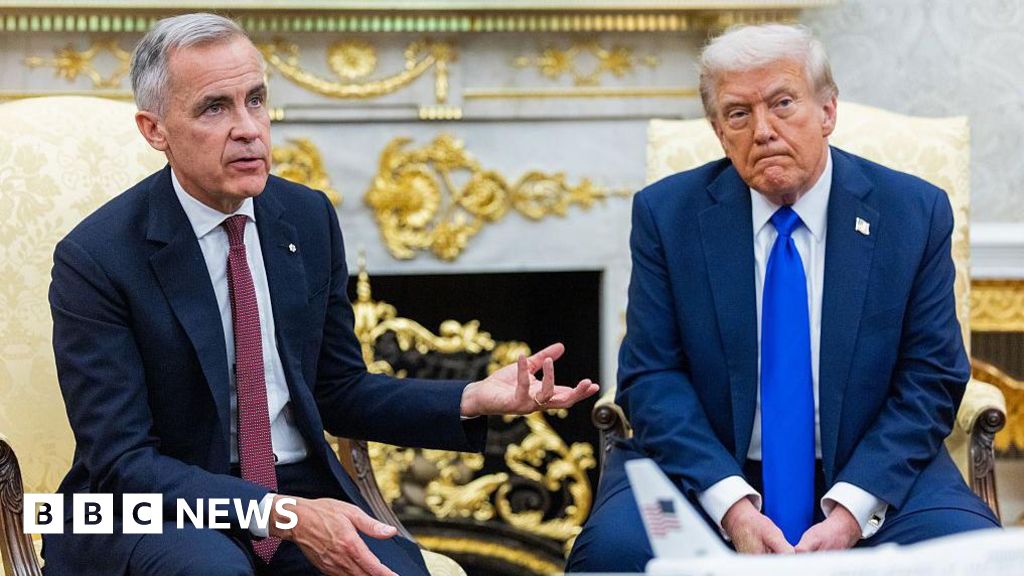
Osmond Chia,Business reporter, and
Maia Davies
Canadian Prime Minister Mark Carney said his country is prepared to resume trade talks with the US “when the Americans are ready.”
His remarks come after US President Donald Trump announced an immediate end to all trade negotiations with Canada over an advert critical of the tariffs he has imposed on the nation.
The advert, sponsored by the Canadian province of Ontario, quotes former US President Ronald Reagan, a Republican and icon of US conservatism, saying tariffs “hurt every American”.
Trump wrote on social media that the advert was “FAKE” and “egregious”, adding that trade talks were “HEREBY TERMINATED”.
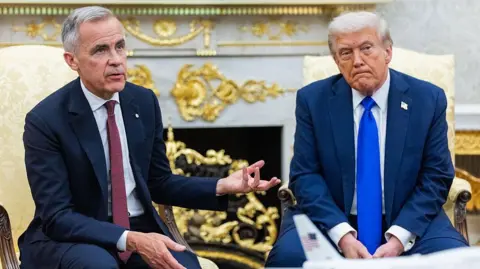 Getty Images
Getty ImagesThe Trump administration has imposed a 35% levy on many Canadian imports, as well as individual tariffs targeting particular industries like car and steel manufacturing. Ontario has been particularly hard-hit by these.
Trump has allowed exemptions for goods that fall under a free trade agreement with Mexico and Canada, negotiated during his first term.
But since his election earlier this year, Canada’s Carney has attempted to strike a deal that would ease the tariffs. Three-quarters of Canadian exports are sold to the US, making its economy particularly vulnerable.
This effort has been complicated by Ontario Premier Doug Ford, who is one of the most vocal critics of the taxes levied on US firms buying Canadian products.
In the minute-long advert published last week, Reagan’s voice can be heard narrating over images that include the New York Stock Exchange and cranes adorned with both US and Canadian flags.
The video excerpts from a 1987 national radio address by Reagan that focuses on foreign trade.
“When someone says, ‘let’s impose tariffs on foreign imports’, it looks like they’re doing the patriotic thing by protecting American products and jobs. And sometimes, for a short while, it works – but only for a short time,” Reagan says in the advert.
“Over the long run, such trade barriers hurt every American, worker and consumer.
“High tariffs inevitably lead to retaliation by foreign countries and the triggering of fierce trade wars… Markets shrink and collapse, businesses and industries shut down and millions of people lose their jobs.”
The Ronald Reagan Foundation – which is charged with preserving his legacy – released a statement on Thursday saying the advert had used “selective” audio and video of the former president’s remarks.
It said the advert “misrepresents” the former president’s address, without specifying why, and accused the Ontario government of not seeking permission to use and edit the remarks.
The foundation said it was “reviewing its legal options”.
Trump referenced this statement, and said the video was designed to “interfere with” the US Supreme Court’s upcoming decision in November on whether Washington’s sweeping tariffs on many nations’ products are legal.
The court’s decision represents the biggest test of Trump’s presidential authority and signature economic policy, potentially forcing the US to refund billions collected in tariffs.
Prime Minister Carney did not address the advertisement in his remarks early on Friday. He said that Canada has made “a lot of progress” in trade talks with the US, but is also focused on “developing new partnerships” with other countries, including Asia.
He spoke as he was departing Canada for the ASEAN summit in Kuala Lumpur. Trump is also expected to attend.
Ford, meanwhile, posted the full Reagan speech on X and wrote: “Canada and the United States are friends, neighbours and allies. President Ronald Reagan knew that we are stronger together.”
While it only includes excerpts from the original, five-minute-long address, it does not alter Reagan’s words.
The order in which he makes the comments has been changed. The advert’s penultimate sentence is taken from near the beginning of his speech, and a phrase that features about halfway through the advert is likewise taken from an earlier point in the address.
The original address – titled Address to the Nation on Free and Fair Trade – is regarding a specific set of tariffs the Reagan administration had at the time imposed on some Japanese goods.
Reagan seeks to use the speech to explain why he introduced the tariffs in this “special case” despite his belief that “imposing such tariffs or trade barriers and restrictions of any kind are steps that I am loath to take”.
He makes clear that he wants to lift them as soon as possible “to promote the prosperity and economic development that only free trade can bring” – a position he stresses throughout the speech.
Trump later doubled down on his criticism of the advert, writing that “Ronald Reagan did not like Tariffs, when actually he LOVED TARIFFS FOR OUR COUNTRY, AND ITS NATIONAL SECURITY”.
Speaking to White House reporters on Friday morning, US National Economic Council Director Kevin Hassett said that “frustration has built up over time” with Canada.
“The Canadians have been very difficult,” he said.
A few minutes earlier, he told Fox Business that “sometimes when you’re frustrated, a time-out is the right call.”
“It’s probably a good time to take a break.”
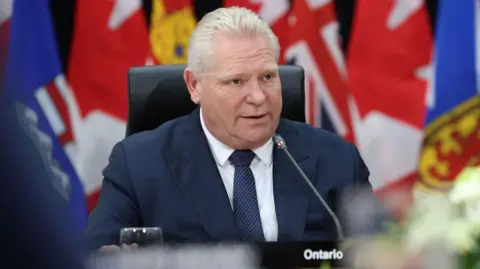 Getty Images
Getty ImagesThe advert was run as part of a campaign worth $75m Canadian dollars (£40m; $54m) on mainstream TV channels in the US.
In a post accompanying the advert last week, Ford wrote that “we’ll never stop making the case against American tariffs on Canada”.
China’s embassy in Washington also used a similar Reagan clip in a post on X to cast doubt on Trump’s global tariffs earlier this year.
Ontario is Canada’s most populous province and its largest regional economy, and has suffered the most as a result of the US tariffs.
Ford hit back at Trump’s earlier tariff threat against Canada by saying he was willing to cut off power supply to the US.
He had also described Washington’s trade policies against Canada as having pulled a knife and “yanked it into us“, and called on US lawmakers to put pressure on Trump.
Trump’s sector-specific levies on Canadian goods include a 50% levy on metals and 25% on automobiles.
The White House’s global tariffs – particularly on steel, aluminium and cars – have hit Canada hard, forcing job losses and putting pressure on businesses.
It is the second time Trump has said he was ceasing trade talks with Canada, after Ottawa announced it would impose a digital services tax on US technology firms earlier this year.
When Canada rescinded the tax, the White House said Carney had “caved” to pressure from Trump.
Business
Tata Group Tussle: What’s Behind The Boardroom Rumblings And Tata Sons Listing Row
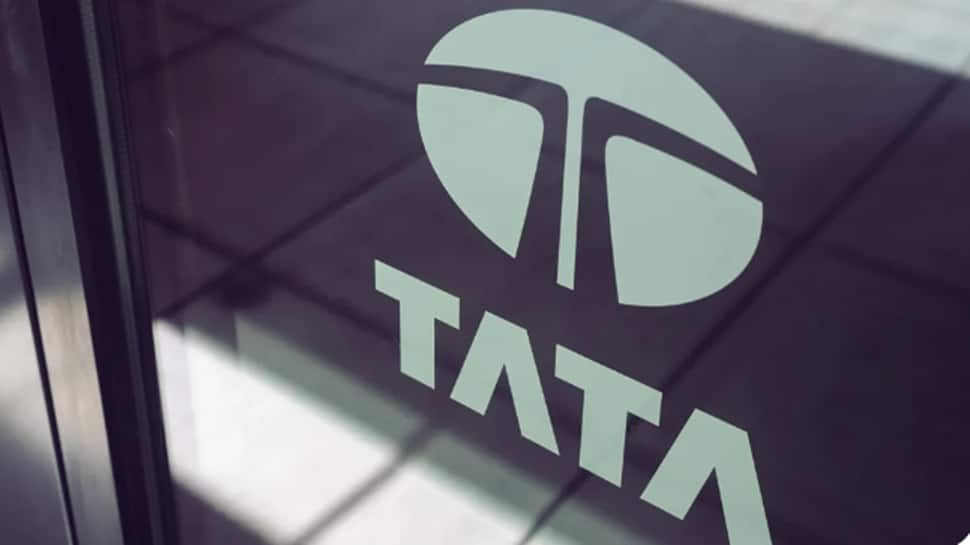
The Tata Group, one of India’s largest and most respected business conglomerates, is facing growing internal differences over whether its parent company, Tata Sons, should be listed on the stock market. Tata Sons is the unlisted holding company that controls the Tata Group’s vast network of businesses — including Tata Steel, Tata Motors, Tata Consultancy Services, and Air India. According to its 2024–25 annual report, it holds stakes in 355 subsidiaries, 39 joint ventures, and 48 associate companies, and received Rs 36,149 crore in dividends from them last year, reported Mint
Because Tata Sons is unlisted, its shareholders cannot easily sell or “monetize” their holdings. The SP Group, which has been part of Tata Sons since the 1930s, has long wanted a listing to unlock the value of its stake — estimated between Rs 1.5 trillion and Rs 3 trillion, said reports.
The Core Dispute
The SP Group’s demand for listing gained momentum after its representative, Cyrus Mistry, was removed as Tata Sons chairman in 2016, a move that led to a bitter legal and personal fallout between the two groups.
The SP Group, which faces significant debt in its construction and infrastructure businesses, sees the listing as a way to raise funds and strengthen its finances. Earlier this year, credit rating agency ICRA reaffirmed a ‘BBB’ rating with a negative outlook for Shapoorji Pallonji and Company Pvt. Ltd., pointing to continued pressure on liquidity, said reports.
In contrast, Tata Trusts, which uses its dividends from Tata Sons to fund large-scale philanthropic projects, has no such financial pressure. In 2024–25, it disbursed Rs 902 crore in grants, with most funds directed to social and institutional programs. The Trusts also influence key decisions within Tata Sons, including top appointments and governance matters, and want the group to retain its private, long-term structure. Meanwhile, as per PTI reports, Tata Trusts has circulated a proposal to reappoint Mehli Mistry as a trustee for three of its key philanthropic bodies, a move that would make him a lifetime trustee.
RBI’s Role and the Listing Deadline
The Reserve Bank of India (RBI) added to the tension in September 2022, when it classified Tata Sons as an “upper-layer” non-banking financial company (NBFC) — a category that required the company to list its shares within three years, by September 2025.
However, Tata Sons moved to avoid that requirement by retiring debt and surrendering its NBFC licence earlier this year. This would allow it to remain a privately held company. The company is currently awaiting RBI’s approval for its deregistration.
The RBI’s silence on the matter since then has raised eyebrows among market watchers, with some questioning whether the central bank will enforce the original listing rule or allow Tata Sons to remain private.
What’s At Stake
According to experts, for the SP Group, listing Tata Sons could unlock much-needed value and ease its debt burden. In a recent statement, the group called the listing a “moral and social imperative,” arguing that it would “unlock immense value for over 1.2 crore shareholders of listed Tata companies who indirectly have a stake in Tata Sons.”
The Shapoorji Pallonji (SP) Group has renewed its call for public listing. In a strongly worded statement, the group described the IPO as “a moral and social imperative”, saying it would “unlock immense value for over 1.2 crore shareholders of listed Tata companies.
For Tata Trusts, however, a public listing could mean less control over the company that anchors the entire Tata empire. The Trusts’ leadership believes the current structure — where dividends from Tata companies fund its philanthropic work — best preserves the vision of Jamsetji Tata, the group’s founder, noted analysts.
Business
Emissions from UK residents and businesses fell by 0.5% in 2024, data shows

Greenhouse gas emissions generated by UK residents and businesses both at home and abroad fell by 0.5% in 2024, provisional figures show.
The Office for National Statistics (ONS) said on Friday that the UK’s so-called “residential basis” emissions were 476 million tonnes of carbon dioxide equivalent (CO2e) in 2024.
This was 43.3% below levels in 1990 – the first year the ONS has data for.
Residence basis emissions cover those generated by British residents and businesses regardless of where they occur geographically.
The 0.5% fall from 2023 continues a general downward trend since the data time series began in 1990.
The manufacturing industry was the largest contributor to this total decrease in 2024, falling by 7.4% from 2023, according to the ONS.
Meanwhile, consumer spending remained the largest single contributor to UK emissions on a residence basis, at 26.0% of the 2024 UK total, the figures show.
These emissions were found to have risen by 1.7% in 2024 compared with 2023, marking the first time annual consumer expenditure emissions have increased since 2021, during the coronavirus pandemic.
This rise was largely driven by a 4.1% increase in residential natural gas combustion, the ONS said.
The second largest contributor to the UK’s emissions last year was found to be the transport sector at 16.1%.
It came after emissions from this industry increased by 4.5% in 2024, continuing a general rise for transport since 2021.
The ONS also published figures on changes in UK emissions intensity – which measures environmental efficiency by comparing the quantity of emissions to the economic output.
Between 2023 and 2024, UK emissions intensity fell from 0.16 to 0.15 thousand tonnes of CO2e per million pounds of gross value added (GVA).
Residence basis emissions, which are published by the ONS, can include emissions generated by UK residents overseas, such as travel, and from UK-registered companies operating abroad but they exclude those generated within the UK by foreign residents and businesses.
They differ from the Energy Department’s (Desnz) figures – last released in March – that calculate the emissions generated within the UK’s borders.
In 2024, these territorial emissions were 371.4 million tonnes of carbon equivalent – which was 3.5% lower than 2023 and 54.2% lower than 1990.
-

 Tech1 week ago
Tech1 week agoWhy the F5 Hack Created an ‘Imminent Threat’ for Thousands of Networks
-

 Tech5 days ago
Tech5 days agoHow to Protect Yourself Against Getting Locked Out of Your Cloud Accounts
-
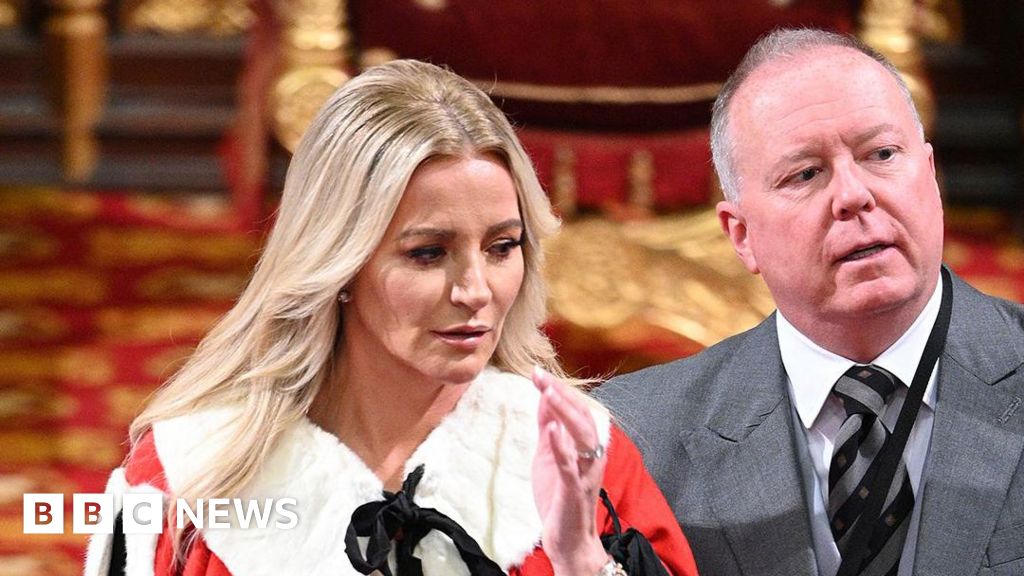
 Business1 week ago
Business1 week agoBaroness Mone-linked PPE firm misses deadline to pay £122m
-

 Sports6 days ago
Sports6 days agoPCB confirms Tri-nation T20 series to go ahead despite Afghanistan’s withdrawal – SUCH TV
-

 Sports1 week ago
Sports1 week agoU.S. Soccer recommends extending NCAA season
-

 Tech6 days ago
Tech6 days agoI Tested Over 40 Heat Protectant Sprays to Find the Best of the Best
-
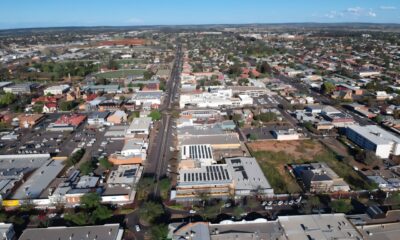
 Tech6 days ago
Tech6 days agoSome major Australian towns still have poor phone reception—it’s threatening public safety
-

 Tech5 days ago
Tech5 days agoThe DeltaForce 65 Brings Das Keyboard Into the Modern Keyboard Era—for Better or Worse






